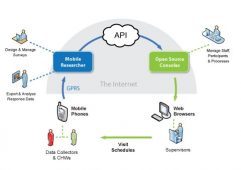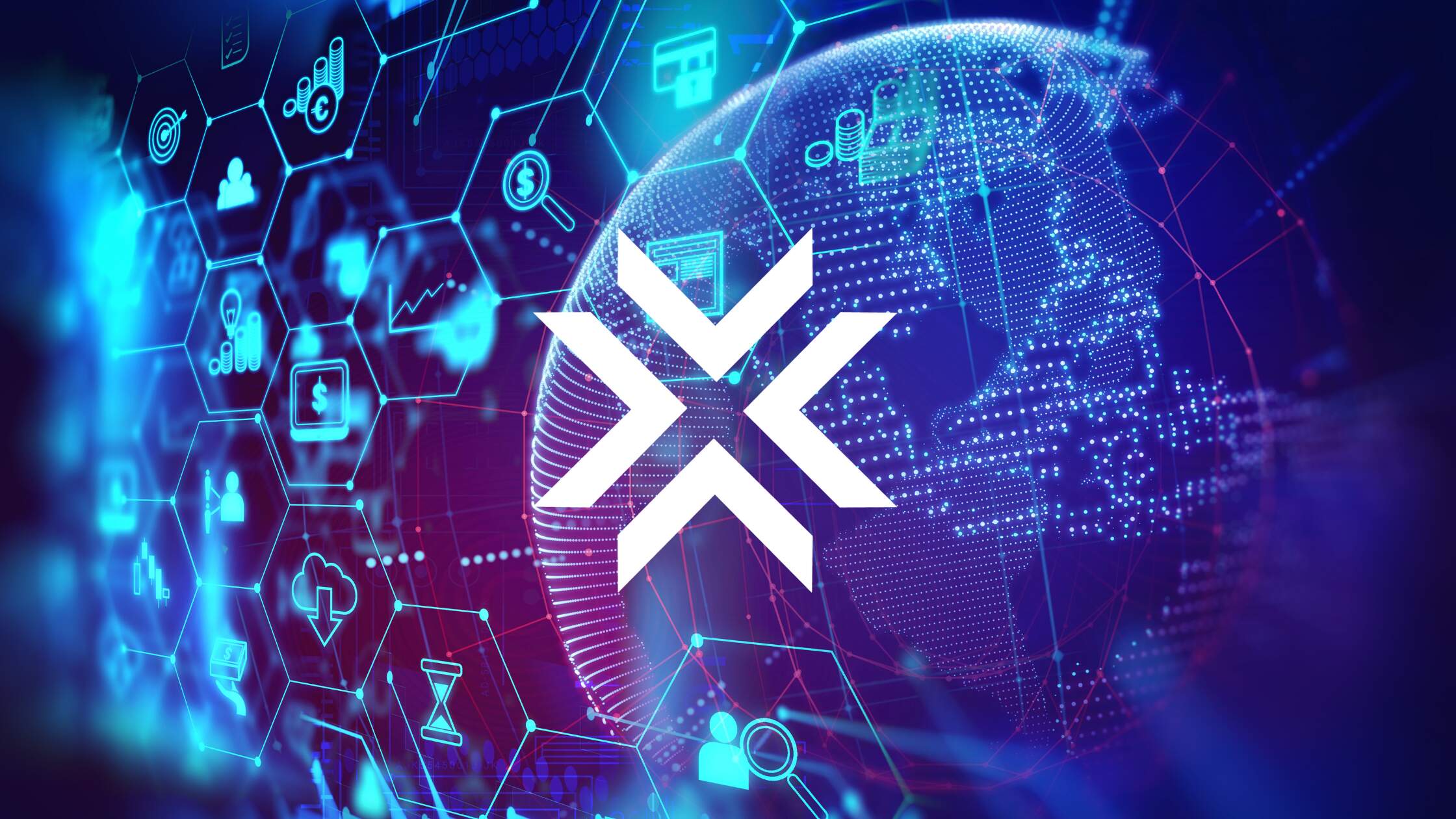Why put something on the Blockchain?
The emergence of blockchain technology has revolutionized the way data is stored, verified, and accessed. The blockchain is a decentralized and distributed ledger that offers transparency, immutability, and security. These unique attributes have made it increasingly popular across various industries.
One of the main reasons to put something on the blockchain is to ensure trust and transparency. Traditional centralized systems require trust in a single entity or authority to manage and validate data. However, this centralized approach is susceptible to fraud, errors, and tampering.
By contrast, the blockchain eliminates the need for intermediaries and provides a decentralized network where transactions and data are verified and recorded by multiple participants, known as nodes. This distributed consensus mechanism guarantees the integrity and trustworthiness of the information stored on the blockchain.
Another compelling reason to utilize the blockchain is its immutability. Once a transaction or piece of data is added to the blockchain, it becomes virtually impossible to alter or delete it. This feature ensures that records are permanent and resistant to manipulation, making the blockchain suitable for applications requiring historical data integrity.
Furthermore, the blockchain offers enhanced security compared to traditional systems. Data on the blockchain is encrypted and stored across multiple nodes, making it highly resistant to hacking and unauthorized access. Additionally, the use of cryptographic algorithms ensures the privacy and confidentiality of sensitive information.
Moreover, the blockchain provides increased efficiency and cost-effectiveness. Traditional processes often involve multiple intermediaries, paperwork, and time-consuming manual verification. With the blockchain, these processes can be streamlined through smart contracts, which are self-executing contracts with predefined conditions. Smart contracts eliminate the need for intermediaries, automate processes, and reduce costs, making them highly beneficial for various applications such as supply chain management and financial transactions.
The blockchain also opens up new opportunities for innovation and collaboration. It enables the development of decentralized applications (dApps) and ecosystems where individuals and organizations can interact and transact directly without relying on intermediaries. This decentralized nature fosters transparency, inclusivity, and equal access, empowering individuals and promoting innovation.
Lastly, putting something on the blockchain can provide proof of ownership, authenticity, and provenance. The blockchain’s transparent and immutable nature allows for easy verification of ownership for assets such as digital currencies, intellectual property, and digital certificates. It also enables tracking the origin and history of goods, reducing counterfeiting and ensuring the authenticity of products.
In summary, putting something on the blockchain offers trust, transparency, immutability, security, efficiency, and innovation. These advantages make the blockchain a compelling technology for a wide range of applications, revolutionizing industries and shaping the future of data management.
How does the Blockchain work?
The blockchain is a complex technology that fundamentally changes how data is stored and verified. At its core, the blockchain is a decentralized and distributed ledger that records transactions or data across multiple computers, known as nodes.
When a transaction occurs, it is grouped together with other transactions into a block. Before the block is added to the blockchain, it must go through a verification process. This process involves the consensus of the participating nodes, who validate the authenticity and integrity of the transactions within the block.
The most common consensus mechanism used in blockchain technology is called proof-of-work (PoW). In PoW, miners compete to solve a complex mathematical puzzle, with the first miner to solve it receiving the authority to add the block to the chain. This process requires a significant amount of computational power and energy, ensuring the security and integrity of the blockchain.
Once a block is added to the blockchain, its contents are permanently recorded and cannot be altered or deleted. Each block contains a unique identifier called a hash, which is generated based on the data within the block. This hash serves as a digital fingerprint and allows for easy verification of the block’s integrity.
One of the key features of the blockchain is its decentralized nature. Unlike traditional centralized systems, where data is stored and controlled by a single entity, the blockchain relies on a network of nodes that store and validate the data. This decentralized structure ensures that no single party has control over the blockchain, making it resistant to censorship, fraud, and malicious attacks.
In addition to transactions, the blockchain can also store other types of data, such as digital assets, smart contracts, and digital identities. These data types are represented as digital tokens on the blockchain and can be transferred or accessed securely by users.
Blockchains can be either public or private. Public blockchains, like Bitcoin and Ethereum, are open to anyone and allow for anonymous participation. Private blockchains, on the other hand, are restricted to a specific group or organization and require permission to join.
Overall, the blockchain operates on the principles of decentralization, immutability, and consensus. It provides a transparent and secure platform for storing and verifying data without the need for intermediaries. The blockchain’s innovative design has the potential to transform various industries and revolutionize the way data is managed and trusted.
Choosing the appropriate Blockchain platform
As the popularity of blockchain technology continues to grow, it is important to choose the right blockchain platform for your specific needs. With a plethora of options available, selecting the appropriate platform requires careful consideration of various factors.
One of the key factors to consider is the type of blockchain platform – whether it is public or private. Public blockchains, like Bitcoin and Ethereum, offer open access and decentralized participation. They are suitable for applications that require transparency and do not require strict control over participants. On the other hand, private blockchains provide restricted access and are ideal for organizations that require permissioned participation and greater control over the network.
Another important consideration is the scalability and performance of the blockchain platform. Some platforms, like Bitcoin, have limited scalability due to their consensus mechanisms and block size limitations. On the other hand, platforms like Ethereum 2.0 and Hyperledger offer enhanced scalability and performance, making them suitable for applications with high transaction volumes and complex smart contracts.
Interoperability is also a crucial factor to consider. The ability of a blockchain platform to integrate and communicate with other existing systems and networks can greatly impact its usability and versatility. Platforms like Ripple and Stellar are specifically designed for interoperability and facilitate seamless integration with traditional financial systems.
Security is another critical aspect to evaluate when choosing a blockchain platform. Look for platforms that employ robust cryptographic algorithms, have a track record of security audits, and prioritize data privacy. Platforms like Hyperledger Fabric and Corda are known for their strong security features and privacy controls, making them suitable for applications that handle sensitive data.
Choosing a blockchain platform with a vibrant and active development community is also advantageous. Platforms with a thriving community often receive regular updates, improvements, and support. They also offer a wider range of development tools, resources, and documentation, making it easier for developers to build applications on top of the platform.
Cost is another important consideration. Some blockchain platforms require expensive mining operations or transaction fees, while others are more cost-effective. Consider the economic model of the platform and evaluate its sustainability and long-term viability.
Lastly, consider the level of adoption and use cases of the blockchain platform. Look for platforms that have a proven track record of successful implementations in your specific industry or domain. Platforms that are widely adopted and supported by reputable organizations offer a higher level of confidence and reliability.
In summary, when choosing the appropriate blockchain platform, consider factors such as the type of blockchain, scalability, interoperability, security, community support, cost, and adoption. Evaluating these factors will help you make an informed decision that aligns with your specific requirements and goals.
Understanding the key concepts of Blockchain
To harness the benefits of blockchain technology, it is essential to grasp the key concepts that underpin its functionality. While the blockchain may seem complex at first, breaking it down into essential elements can demystify its inner workings.
At its core, the blockchain is a decentralized and distributed ledger. Instead of being stored in a centralized database, the ledger is replicated and hosted on multiple computers or nodes across a network. This decentralized nature ensures transparency, security, and resilience.
Transactions are the foundation of the blockchain. Each transaction represents a record of value transfer or a change in data state. Transactions are grouped together and stored in blocks, which are added to the blockchain in a sequential and chronological order. This immutability ensures that the transaction history can be verified and audited at any time.
Consensus is another crucial concept in blockchain technology. Consensus mechanisms determine how agreement is reached among network participants on the validity of transactions. One popular mechanism is proof-of-work (PoW), where participants compete to solve complex mathematical puzzles to validate transactions and add blocks to the chain. Other mechanisms include proof-of-stake (PoS) and delegated proof-of-stake (DPoS), which rely on the participants’ stake or voting power.
Cryptography lies at the heart of blockchain technology. It ensures the security and integrity of the data stored on the blockchain. Every transaction is digitally signed using cryptographic algorithms, which provide authentication and non-repudiation. Additionally, cryptographic hashes are used to link blocks together, forming a chain that prevents tampering or alteration of past transactions.
Smart contracts are self-executing contracts that run on the blockchain. They contain predefined rules and conditions that automatically trigger actions once the conditions are met. Smart contracts streamline processes, eliminate intermediaries, and provide transparency. Platforms like Ethereum and Hyperledger are known for their robust smart contract capabilities.
Public and private key cryptography is used to provide secure access and identity verification on the blockchain. Each participant has a unique pair of cryptographic keys: a private key and a public key. The private key is kept secret and is used to sign transactions, while the public key is freely shared and used by others to verify the authenticity of the transactions.
Blockchain can be classified into two main types: public and private. Public blockchains are open and accessible to anyone, allowing for anonymous participation. Examples include Bitcoin and Ethereum. Private blockchains, on the other hand, have restricted access and require permission to join. They are commonly used by businesses and organizations for internal applications.
Tokenization is a key concept in blockchain that involves representing real-world assets or digital assets as tokens on the blockchain. These tokens can represent anything of value, such as currencies, digital certificates, or ownership rights. Tokenization enables the seamless transfer and ownership of assets on the blockchain.
Overall, understanding these key concepts – decentralized ledger, transactions, consensus, cryptography, smart contracts, public-private keys, types of blockchains, and tokenization – lays the foundation for comprehending how blockchain operates and opens up possibilities for application development in various industries.
Step-by-step guide to putting something on the Blockchain
Putting something on the blockchain is a multi-step process that involves creating a transaction, validating it, and adding it to the blockchain. Here is a step-by-step guide to help you navigate through the process:
- Choose a suitable blockchain platform: Select a blockchain platform that aligns with your specific needs. Consider factors such as scalability, security, community support, and cost.
- Create a digital wallet: Set up a digital wallet specific to the chosen blockchain platform. The wallet will store your digital assets, private and public keys, and allow you to transact on the blockchain.
- Identify the type of transaction: Determine the type of transaction you want to put on the blockchain. It can be a financial transaction, data storage, or interaction with a smart contract.
- Gather necessary information: Collect all the relevant information and data required for the transaction. Ensure that the data is accurate, complete, and properly formatted.
- Create the transaction: Use your digital wallet to create the transaction. Specify the sender, recipient, amount, and any additional data or conditions relevant to the transaction.
- Sign the transaction: Use your private key to digitally sign the transaction. This process verifies that you are the authorized sender and ensures the transaction’s integrity and authenticity.
- Broadcast the transaction: Once the transaction is signed, broadcast it to the blockchain network. This step involves sending the transaction to the network of nodes for validation and inclusion in a block.
- Validation and consensus: The transaction goes through a validation process where nodes on the network verify its authenticity and integrity. Consensus mechanisms, such as proof-of-work or proof-of-stake, are employed to reach agreement on the transaction’s validity.
- Inclusion in a block: Once the transaction is validated, it is added to a block along with other validated transactions. The block is then added to the blockchain, forming a permanent record of the transaction.
- Confirmation and verification: The transaction is now confirmed by the network and becomes a part of the blockchain’s transaction history. Participants can verify the transaction using the public key and trace its details on the blockchain.
- Monitor and track the transaction: Keep track of the transaction’s progress and status. Blockchain explorers or dashboard tools provided by the blockchain platform can help you monitor the transaction’s details and confirmations.
By following these steps, you can successfully put something on the blockchain. It is important to understand the specific requirements and features of the chosen blockchain platform to ensure a smooth and secure transaction process.
Ensuring data security and privacy on the Blockchain
Data security and privacy are critical considerations when leveraging blockchain technology. While the blockchain offers inherent security features, additional measures can be implemented to enhance data protection. Here are some key steps to ensure data security and privacy on the blockchain:
Encryption: Encrypting data before storing it on the blockchain adds an extra layer of security. Encryption converts data into a cipher-text, which can only be deciphered with the appropriate decryption key. By encrypting sensitive information, you can mitigate the risk of unauthorized access.
Access control and permissions: Implementing access control mechanisms is vital to restrict data access and ensure privacy. Blockchain platforms often allow you to define permissions and access levels for different participants. This ensures that only authorized individuals or entities can access and interact with specific data.
Anonymity and pseudonymity: Some blockchain platforms offer features that allow participants to maintain anonymity or use pseudonyms. This helps protect personal information and ensures privacy, especially in public blockchains where participants may prefer not to reveal their real identities.
Data minimization: Practicing data minimization on the blockchain involves storing only necessary and relevant data. Storing excessive or unnecessary data can increase the risk of potential privacy breaches or expose sensitive information. By adopting a minimal data approach, you can mitigate these risks.
Off-chain storage: Storing certain sensitive or confidential information off-chain can further enhance data security and privacy. Off-chain storage refers to storing data in separate databases or encrypted files that are not directly accessible on the blockchain. The blockchain can then serve as a reference or proof of existence for the off-chain data.
Consent and transparency: Transparency is a fundamental feature of the blockchain, but it is crucial to ensure that participants consent to the visibility of specific data. It is essential to establish clear consent protocols and inform participants about which data will be publicly visible and which will remain private. Transparency and consent maintain trust and respect privacy concerns.
Audit trails and immutability: The blockchain’s immutability and transparent nature can help in auditing and ensuring data integrity. Immutable records make it easier to track and verify the history of data changes, which can be vital in maintaining data security and privacy compliance.
Data validation: Implementing data validation mechanisms, such as digital signatures or checksums, helps ensure the integrity and authenticity of data on the blockchain. These mechanisms verify that the data has not been tampered with and remains unchanged since its creation.
Regular updates and security audits: Stay up to date with the latest security measures and protocols provided by the blockchain platform. Participate in security audits and vulnerability testing to identify and rectify any potential weaknesses in the system. Regular updates and assessments help maintain data security and protect against emerging threats.
By adopting these measures, individuals and organizations can establish a secure and privacy-centric environment on the blockchain. However, it is important to note that while the blockchain provides a strong foundation for data security, it is not a guarantee of invincibility. It is crucial to continually assess and improve security practices to adapt to evolving threats and ensure ongoing data protection.
Future trends and challenges in Blockchain technology
Blockchain technology continues to evolve and has the potential to disrupt various industries. As the technology matures, several trends and challenges are expected to shape its future. Here are some key areas to watch:
Scalability: Scalability remains a significant challenge for blockchain technology. As more transactions are processed on the blockchain, the existing infrastructure may struggle to handle increased network traffic. Solutions like sharding, second-layer protocols, or newer consensus mechanisms are being explored to address scalability concerns and enable higher transaction throughput.
Interoperability: Interoperability between different blockchain networks and platforms is crucial for widespread adoption. Currently, blockchains operate in silos, hindering data transfer and communication between different networks. Efforts are underway to develop standards and protocols that facilitate seamless interoperability, allowing information and assets to move freely between different blockchains.
Privacy and confidentiality: While the blockchain offers transparency, there is a need for privacy and confidentiality in certain applications. Innovations such as zero-knowledge proofs and secure multiparty computation are being explored to enable selective data privacy on the blockchain. These advancements aim to strike a balance between transparency and confidentiality, catering to different use cases and regulatory requirements.
Regulatory frameworks: The regulatory landscape surrounding blockchain technology is still being developed. Governments and regulatory bodies are grappling with how to regulate blockchain-based applications, cryptocurrencies, and smart contracts. Establishing clear and consistent regulatory frameworks will foster trust, innovation, and mass adoption of blockchain technology across different jurisdictions.
Environmental impact: The energy consumption associated with some blockchain platforms, especially those using proof-of-work consensus, has raised concerns about environmental sustainability. Efforts are being made to develop more energy-efficient consensus mechanisms and explore alternative approaches that minimize the environmental impact of blockchain operations.
Enterprise adoption: While the initial focus of blockchain technology was on cryptocurrencies, there is an increasing trend towards enterprise adoption. Organizations across various industries are exploring how blockchain can optimize processes, enhance transparency, and enable new business models. As more enterprises adopt blockchain, the technology is expected to mature, leading to innovative use cases and industry-wide transformations.
Integration with emerging technologies: Blockchain is likely to integrate with other emerging technologies, such as the Internet of Things (IoT), artificial intelligence (AI), and decentralized finance (DeFi). These integrations hold the potential to create powerful ecosystems where blockchain acts as a foundational layer of trust and security to enable seamless interactions between various technologies.
Ethical and social implications: Blockchain technology raises ethical and social questions related to privacy, data ownership, and governance. Striking the right balance between transparency, decentralization, and individual rights will be crucial in addressing these challenges and ensuring that blockchain technology is deployed in a responsible and inclusive manner.
As the blockchain ecosystem continues to evolve, these trends and challenges will shape the future of the technology. Overcoming these obstacles and embracing the opportunities will pave the way for widespread adoption and the realization of the full potential of blockchain across industries and society as a whole.

























